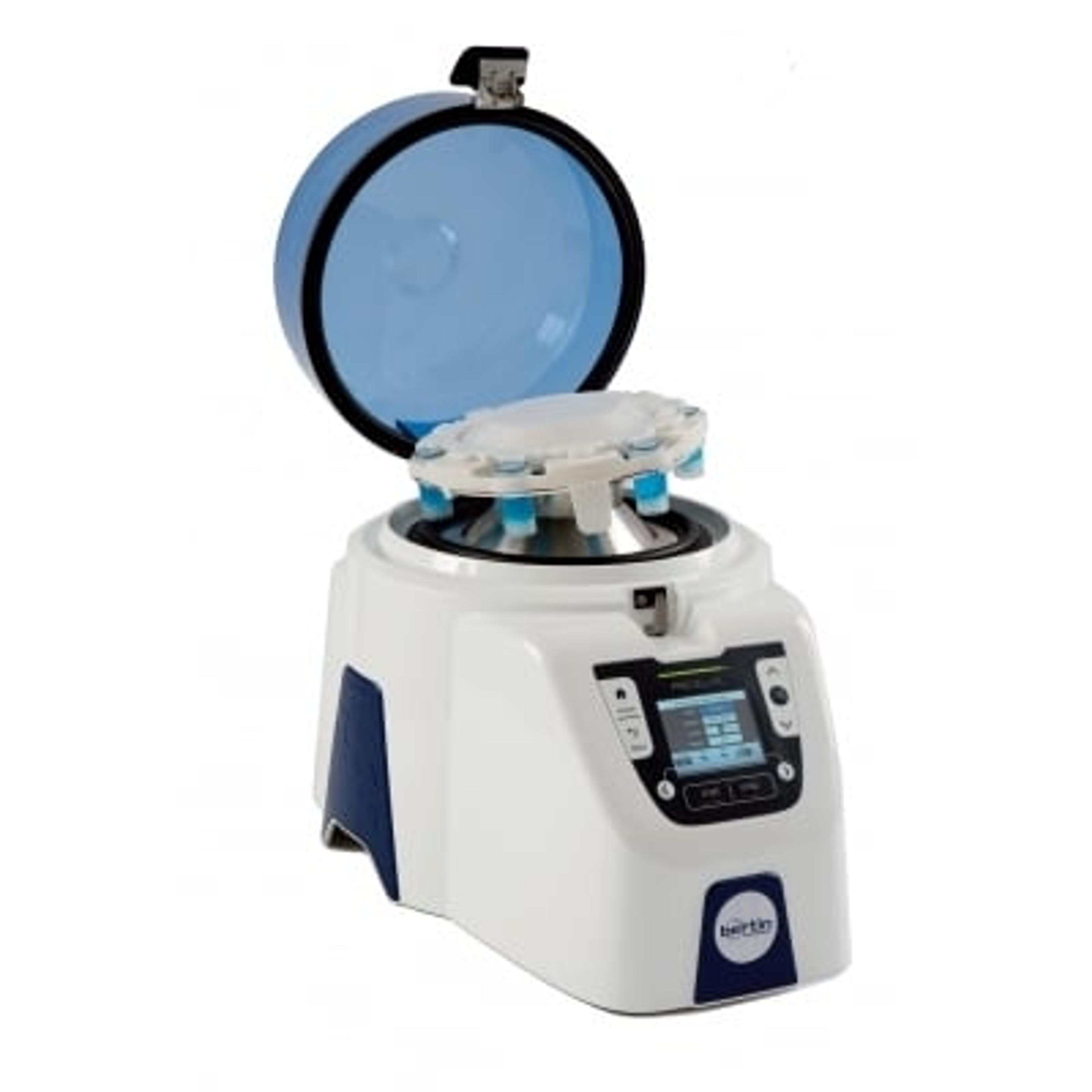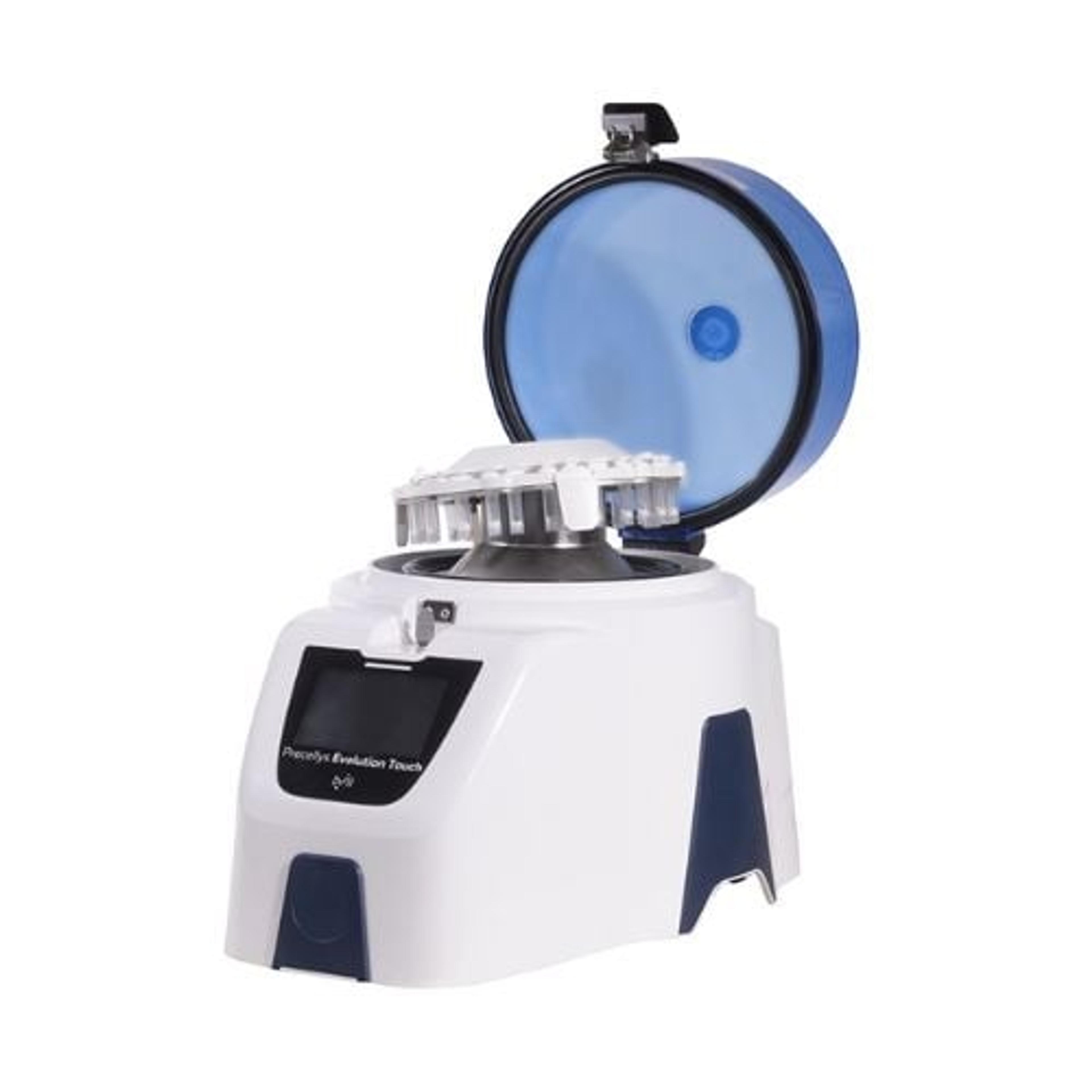Explore the power of Precellys for DNA and RNA workflows
18 Oct 2024
Precellys® Evolution Touch
Molecular biology techniques such as qPCR and NGS have become a must-have step for most biological studies and their publication. As a result, obtaining the highest quality nucleic acids, in terms of purity, yield, or fragment size, is crucial to allow these techniques to be efficiently performed. However, starting from complex biological material implies that many challenges must be overcome.
Dr. François D’Hubert, Sample Preparation Product Manager and Dr. Lucie Tarayre, Field Application Scientist at Bertin Technologies will explain how to optimize your DNA and RNA extraction processes and show how to simplify your life in the lab using Precellys®.
Key learning objectives
- Learn how to challenge and improve your DNA/RNA sample preparation
- Discover the advantages of 3D-bead-beating technology for the extraction and protection of high-quality nucleic acids
- Learn different ways to homogenize samples for DNA and RNA extraction
- Explore solutions to improve efficiency in the lab
Who should attend?
- Researcher and researcher PhD students, students, graduate students, doctoral students, post doc researchers, assistant/associate professors, professors, lab techs, lab specialists, scientists, lab managers, lab supervisors/directors, principal investigators, principal/associate scientists, QA/QC managers/supervisors, chief scientific officers, VP of research and development (or any decision-making role), and those in both academia, government, and private sector industries.
Find highlights from the live Q&A session below or register to watch the webinar at any time that suits you.
I would like to cryo-grind animal tissue samples. Is that possible with the Precellys homogenizers?
LT: Yes, it is possible to do cryo-grinding, especially with the Precellys evolution because we have the Cryolys® cooling unit. You will need to use metal tubes, because you're working with frozen samples, that are available in 2 and 7 mL. You'll need dry ice, liquid nitrogen and the specific 6.8 mm ceramic beads. Then the protocol is simple; you just place your sample and the beads in the metal tube, set up the protocol on the Precellys with the Cryolys at 0°C, snap freeze your sample in liquid nitrogen, and then you'll obtain a powder. You can find different examples of cryo-grinding in the application center. We have also a whitepaper on these techniques.
We would like to homogenize some bone samples. Do you have any recommendations?
FDH: Bones are quite a hard material and so cryo-grinding by snap freezing in liquid nitrogen could be a good option because the cold will increase the capacity of the beads to break the sample. In the case of very hard samples like bones, I would recommend using metal tubes as they need to be more resistant to the impact of the sample on the tube wall. Metal beads have a higher density and so by being denser, they get more kinetic energy and so you increase the efficiency of the homogenization. For bones, metal tubes, and metal beads are the best option. Cryo-grinding can be a good option as well.
LT: For very hard samples such as bones, teeth, and even hair, we prefer using higher speeds on every unit. We prefer having several cycles that are a little bit shorter to avoid any degradation of molecules, especially for RNA proteins.
How safe is the Precellys with regards to aerosol containment as a standalone enduring use with the cooling module?
FDH: The tubes are locked and so are completely hermetic. Nothing can be released in the environment. But in some cases, what's inside the tube can generate an aerosol. So, I would advise you to open and fill the tubes in a safety cabinet, under a laminar hood, that will keep the samples in a safer environment for people who are handling the samples. The Precellys itself is made of a homogenization area, which contains a seal, insulating the homogenization area from the environment. So, even if a tube leaks a little bit or breaks, the contamination remains inside the instruments. It doesn't spread, so you have the time to stop the instrument and prepare the material to clean it in that case. But aerosolization is very brief, so the risk is quite limited, and the instrument is made to prevent any spread of the contamination in the environment.
I have samples of fungi that form resting spores in soils. DNA extraction from these structures from soil have proved very tricky even with a homogenizer and 3D bead beating, do you have any suggestions?
LT: This is the purpose of our different lysing kits – every kit is dedicated to a type of sample or general types of samples. For fungi and spores in particular that are hard to homogenize, we generally use the glass beads. We have two references, the VK01 and VK05. These two references cover samples from 0.6 mg up to 35 g. They've been tested and they provide good results. As it is hard to homogenize these samples, we also prefer higher speeds and repeat several cycles.
To explore the power of Precellys® for DNA and RNA workflows watch this webinar on demand.
SelectScience runs 10+ webinars a month across various scientific topics, discover more of our upcoming webinars>>


